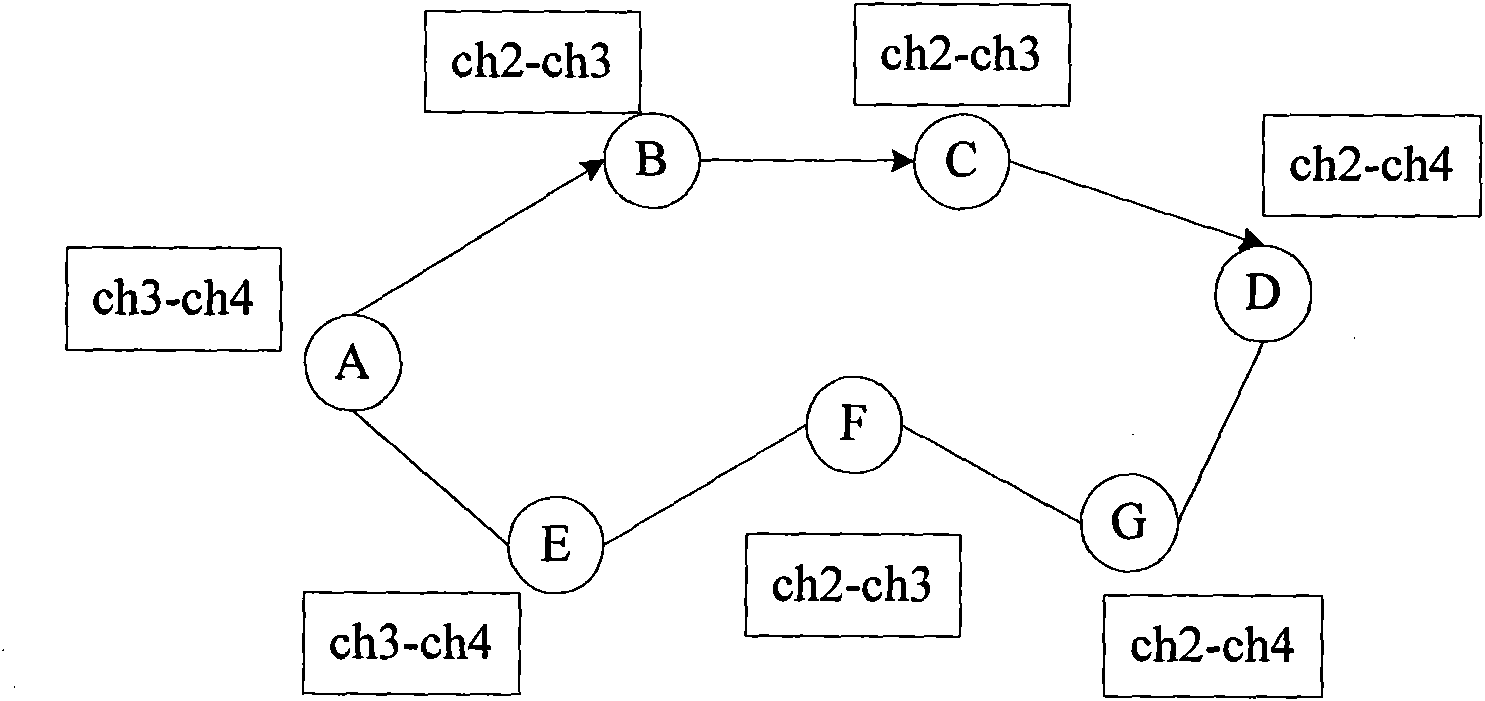Multi-channel routing method based on minimum channel switching in self-organizing network
A self-organizing network and channel switching technology, applied in the field of multi-channel users to find routes, can solve the problem of frequent channel switching delays that are not fully considered, and achieve the effects of improving throughput, reducing network delay, and reducing delay.
- Summary
- Abstract
- Description
- Claims
- Application Information
AI Technical Summary
Problems solved by technology
Method used
Image
Examples
Embodiment Construction
[0019] DSDV (Destination-Sequenced Distance-Vector) is a table-driven routing algorithm. Each node maintains a routing table, which records all possible destination nodes and required hops in the network. number. Each table entry has a serial number assigned by the destination node, which is used to distinguish new routes from old routes. Each node must periodically exchange routing information with neighboring nodes. Of course, routing updates can also be triggered according to changes in the routing table.
[0020]DSDV can only provide a single-hop path between a given source node and destination node, and the protocol needs to select the following parameters: the period of regular update, the maximum "settling time" (settling time) and the interval time between route failures. Although the impact of these parameters on the network is difficult to measure, because its nature is a trade-off between the effectiveness of routing and network communication overhead, the selection...
PUM
 Login to View More
Login to View More Abstract
Description
Claims
Application Information
 Login to View More
Login to View More - R&D
- Intellectual Property
- Life Sciences
- Materials
- Tech Scout
- Unparalleled Data Quality
- Higher Quality Content
- 60% Fewer Hallucinations
Browse by: Latest US Patents, China's latest patents, Technical Efficacy Thesaurus, Application Domain, Technology Topic, Popular Technical Reports.
© 2025 PatSnap. All rights reserved.Legal|Privacy policy|Modern Slavery Act Transparency Statement|Sitemap|About US| Contact US: help@patsnap.com



